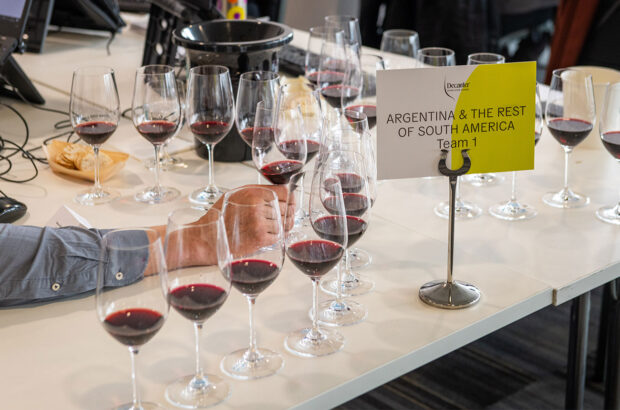Sauternes producers are enjoying a greater share of the Bordeaux vintage limelight in 2013, but there are also reports of vines for sale as producers struggle against low consumer demand.
No one believes Sauternes 2013 will rival the rich largesse of the lauded 2009. But, there is a sense of satisfaction among the region’s producers that their wines are some of the best to emerge from Bordeaux in the present vintage campaign.
In an en primeur week opening speech last night (31 March), Olivier Bernard of Domaine de Chevalier, co-owner of Chateau Guiraud and president of the Union des Grands Crus de Bordeaux (UGCB), announced that 2013 will go down as a ‘bad memory’ for many Bordelais.
Yet, while red wine producers faced a race against rot during harvest, Sauternes producers welcomed the onset of botrytis. ‘The conditions that were a problem for Merlot were the glory of Sauternes,’ said Sauternes expert Bill Blatch.
‘It’s payback time from 2000 and various other vintages, where the reds had this glorious year,’ he told Decanter.com in an interview during en primeur week. He described Sauternes and Barsac 2013 wines as ‘wonderfully fresh and modern’.
For many, 2013 makes welcome change from a particularly tough 2012 vintage. Some producers have still not forgiven LVMH-owned Yquem for refusing to produce a Sauternes in 2012. ‘That killed us,’ said one yesterday.
At Yquem in 2013, Sandrine Garbay told Decanter.com in an interview, ‘Of course the contrast between the 2012 and 2013 is very big, and we are happy to show to the press that in Sauternes and Barsac the vintage was very good. The conditions for noble rot wines were perfect this year.’
However, stringent grape selection to ‘preserve freshness’ means Yquem has only kep 40% of its crop from 2013.
Jeannie Cho Lee MW likened 2013 in Sauternes and Barsac to 2011 in terms of elegance and levels of concentration.
‘There seems to be two different styles coming through. A late-picked, rounder style, and those who focused on the first pickings and have this freshness and great acidity.’ This freshness is good for the region’s image, she said.
‘I didn’t give many wines below 85 points, but then I didn’t give many 94-plus points either. In a great year, we would have eight to ten [estates] at that gold level, but this is not that kind of vintage.’
Despite some of the compliments directed at Sauternes 2013, much of the region continues to struggle with low consumer demand.
‘There are a lot of vineyards for sale in Sauternes and Barsac, but it’s not the classed growths,’ said Olivier Casteja, of Cru Classe Chateau Doisy-Vedrines, and who also heads the union of 1855 classed growths in Sauternes and Barsac.
Casteja himself has just put in an offer to acquire an extra four hectares of vines from his neighbour.
Unlike several other appellations, Sauternes and Barsac has yet to welcome its first Chinese investor in the classed growths. One producer told Decanter.com that it could take some while yet. ‘There’s no profits to be made,’ he said.
Written by Chris Mercer







